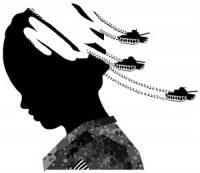Mujeres en las Fuerzas Armadas
El nombramiento de Patricia Ortega como primera general de las Fuerzas Armadas es un paso más en la integración plena de las mujeres en nuestros Ejércitos y Armada Española.
Lejos queda ya la incorporación en 1988 de aquellas 26 pioneras, las cifras así lo avalan. A día de hoy, el número de mujeres (alumnas incluidas) en las Fuerzas Armadas españolas es de 15.519. Dejando a un lado a las alumnas, el número de mujeres es de 14.974, lo que representa el 12,7% del total.
Todas ellas demuestran que, por encima de los riesgos que acompañan a la milicia, tienen el firme compromiso de servir a la paz y seguridad internacional con la máxima entrega que se puede exigir a un militar, su propia vida.… Seguir leyendo »







